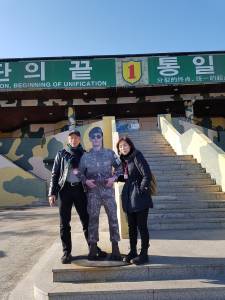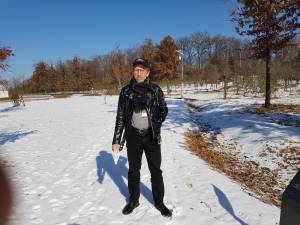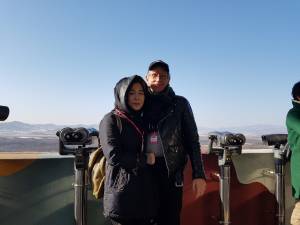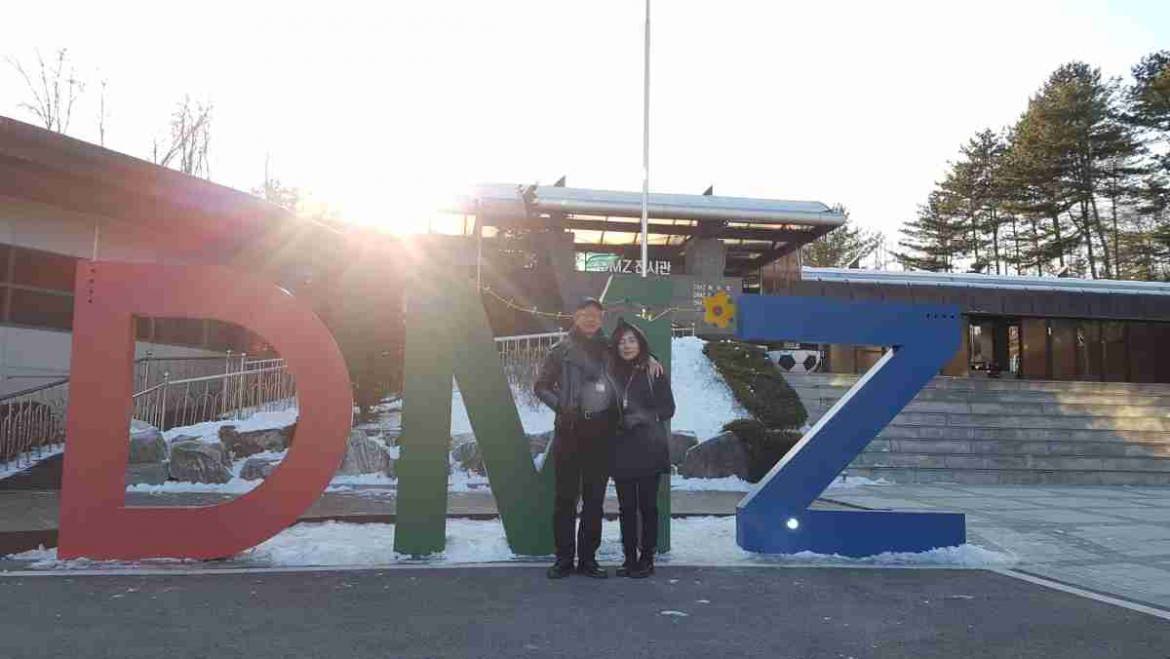A surprising number of South Koreans have never been to the Demilitarized Zone. Of those I have asked, the usual explanations are “I am not interested in going there” and “It’s too scary.” Neither, in my view, is convincing. How could any person, given the opportunity, find the DMZ boring or meaningless? The second is somewhat less baffling, but I can say honestly that in my half-dozen or so trips up to the 38th parallel I have never felt any trepidation. Even when I was at Panmunjeom and North Korean military men were staring at us from the building called Panmungak on the other side, I simply could not muster a sense of fear. In fact, there is a third reason many people have not been there. The government discourages trips to the border and even makes it hard to go. One must prove his loyalist bonafides or at least that nothing in his background indicates allegiance to the DPRK regime. Foreigners like me have a much easier time.

All three of the aforementioned reasons may have kept my girlfriend, Audrey Lim, from going to the DMZ despite living in Seoul all her life. With some prodding from me, she agreed to such an excursion. After learning of something called the DMZ Train which made day trips up there and back, we registered, paid our 62,000 won and got approval.
Up to the border
I met Audrey in the sprawling concourse of Yongsan Station, a place with a lot of history of its own. Wearing matching Doc Martens boots, we boarded a specially designed, rather old-fashioned choo-choo and headed north, past Goyang, Paju, Munsan and Imjingak, towns North Korean soldiers had stormed through in the days following their invasion of the South in late June 1950. On the one-hour ride, we were able to look at a series of photos that conveyed very well the horrors of the Korean War. It managed to avoid the egregious cheerleading for our side and denigrating the enemy which has long been common. That, of course, is not to gloss over the fact that Kim Il-Sung—with a nod from his bosses Joseph Stalin and Mao Zedong—started the war. (Even if he had not done so, the separation of the country had been a fact since 1945, immediately after World War II.) We were given the opportunity to scribble a message on a postcard and hang it with dozens of others. Mine read, “Waiting for unification under the laws of the R.O.K.”
Audrey and I, and all the others, crossed the Imjin River and had to get off at Imjingang Station for an identification check, after which we took a bus to Dorasan. We were deposited at Dorasan Peace Park, which led to the observatory. The weather was so cold that we spent little time outside using the stationary binoculars which allow for a good, although not great, look at the mostly deforested North Korea. A large, heated auditorium gave information about the various buildings and facilities north of the 4-kilometer-wide DMZ—including a statue of Kim (one of approximately 35,000 all over the country), the shuttered Gaeseong Industrial Complex, military fortifications, one of the tallest flagpoles in the world, the Bridge of No Return and barbed-wire fences, like those we have in the South. Also visible were Kiljeong-dong and Daeseong-dong, small villages 1.6 kilometers apart that are allowed to function inside the DMZ for propaganda purposes. The former belongs to North Korea, the latter to South Korea. I have often wondered what life is like for the few hundred people living there, all of whom are subsidized by their respective governments.

Other than these two spots, the Demilitarized Zone has been free of human presence now for 54 years. There are still unexploded mines and bomb craters, but it has made a remarkable comeback. The DMZ teems with thousands of species of wildlife that are endangered elsewhere on the peninsula. We’re talking fish, reptiles, amphibians, Manchurian cranes, Asiatic black bears, musk deer, spotted seals, Amur gorals and even tigers, which were thought to be extinct for at least a century. There are more than 1,000 species of insects, and some 1,600 kinds of vascular plants, mushrooms, lichens and fungi. Who would have expected the DMZ, such a barren, inhospitable place steeped in violence, to become one of the world’s greatest ecological preserves?
And into the tunnel
Audrey and I, and our fellow travelers, were later taken to the so-called Third Tunnel of Aggression. (There are four, and this is the western-most.) A bit of determined digging and use of explosives on the part of our adversaries, it was discovered in 1978. I shudder to think what would have resulted if the DPRK had completed the tunnel and put it to use. There was room for 30,000 soldiers equipped with light weaponry to march through per hour. Fortunately, alert members of the South Korean military detected it and nipped it in the bud, so to speak. We donned blue hard hats and took a monorail 1.6 kilometers down the tunnel to a point at which it is blocked off. Some people would find this experience unnerving, I suppose.
As we toured the south side of the Demilitarized Zone, the most prominent North Koreans were gathering in Pyongyang. The next day, senior officials of the ruling Workers’ Party, presumably including Kim Jong-Un, were to make a solemn procession to Kumsusan Palace of the Sun (built at a cost of almost $1 billion, not a small amount in a country where 2/3 of the people suffer from chronic food shortages) to mark the sixth anniversary of the death of Kim Jong-Il, number two in the family dynasty.  The DPRK’s Korean Central Television broadcast interviews and documentaries of the former leader. Surely reference was made to the fact that his birth was prophesied by a swallow and heralded with a double rainbow and a new star in the heavens, that he made 11 holes-in-one the first time he played a round of golf, that he wrote 1,500 books in a three-year span and that he could change the weather.
The DPRK’s Korean Central Television broadcast interviews and documentaries of the former leader. Surely reference was made to the fact that his birth was prophesied by a swallow and heralded with a double rainbow and a new star in the heavens, that he made 11 holes-in-one the first time he played a round of golf, that he wrote 1,500 books in a three-year span and that he could change the weather.
Returning to the DMZ Train and from there to Seoul, we passed the Inter-Korean Transit Office. This large complex is empty, a virtual ghost town. Built during the heady days of the Sunshine Policy, when hopes for unification were high, it was to be a place of shipment for goods—and, I suppose, people—going both ways. On a related note, when we got to Dorasan Station, we saw a large indoor billboard. It featured a line of railroad tracks extending into the distance. A sign to the right read, “56 kilometers to Seoul, 205 kilometers to Pyeongyang.” In the center, set against a blue sky, were the words “Not the last station from the South, but the first station toward the North.”


7 Comments
Thank you to my good friend, Richard Pennington, for sharing so many enlightened articles with such great skill!
Thanks to YOU, Big Don!!!
Interesting reading. Who would have guessed the DMZ had such an assortment of plants and animals? Makes one wonder if there is a story behind the discovery that these things existed in this area which is typically off limits to humans.
Thanks for your comments, my dear sir.
Oh how a hell was turned into heaven! For soldiers who fought for Korea and loose members of their families it is a place to detest , but becomes a haven for rare species that makes people happy too.
So true, Myline. Thanks for these comments.
In all honesty, I have never been to the DMZ either but I’m starting to get a feeling (certainly after reading this) that I should make work of a trip there… Nice article!
Add Comment